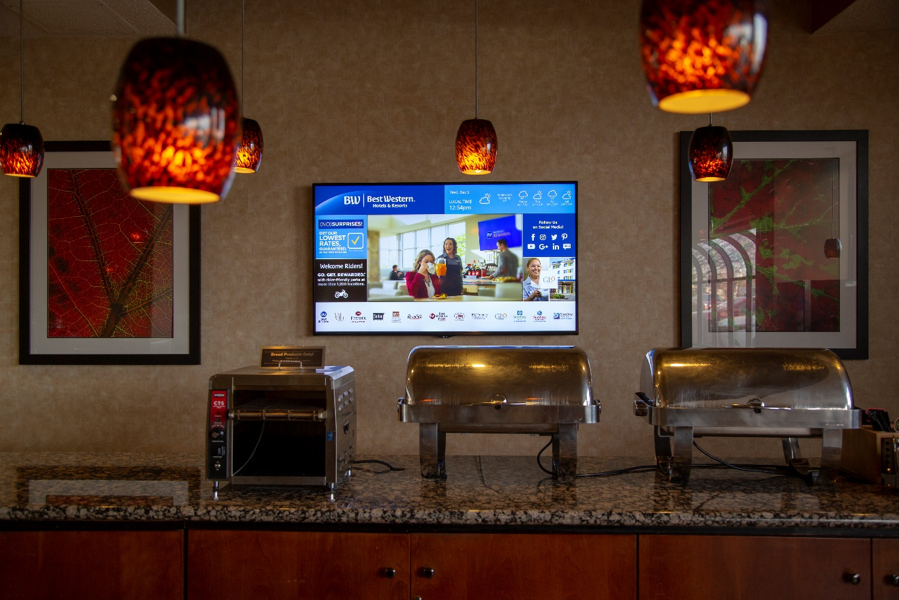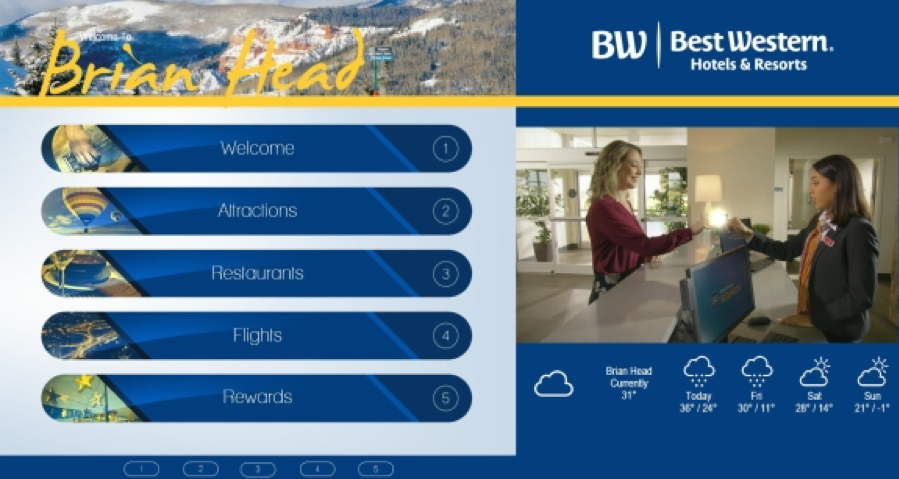
Best Western Rolls Out Smart, webOS-based Screen Network To 2,400+ Hotels
January 18, 2019 by Dave Haynes
LG is seeing what must be one of the largest deployments yet of smart digital signage displays – one or several webOS-based smart commercial screens in more than 2,400 Best Westerns across the US and Canada.
Typically, Best Western guests will see one to three displays at each property, providing travelers with instant access to information about the hotel, the local area and latest news from Best Western. In addition to relevant local and brand information, property owners can display their own custom content.
The screens are all driven by Denver-based Ping HD, via partner Apex Procurement LLC.
The solution, says a press release, is built around 43, 49 and 55 inch LG displays. Some properties are also equipped with a touch screen overlay to allow guests to interact with the screen, helping them gather more information about nearby tourist hotspots, recommended restaurants and, for those properties close to airports, live flight departure information. Ping HD is able to offer live flight data to over 10,000 commercial airports worldwide. Use of QR codes embedded in the content allow the hotel guests to take any of the content with them on their mobile devices.
Finally, some properties feature displays in the restaurant and bar areas to show live TV with an L-Bar wrap.

Adds PingHD: A ‘Locations’ based feature enables the customer to minimize the number of variants to the same ‘Layout’ so that Best Western, does not need 2,400+ unique layouts, one for each display, which would be a labor intensive and logistical nightmare. Instead, only a handful of layouts are required and the same layout can be scheduled to all of the ‘Hi-Board’ screens throughout North America. Based on the location reference, when each layout hits each display, the layout is dynamically populated with site specific content, such as for example the local weather forecast.
A big job. Not much of a fan, to put it mildly, of the multi-zone layout used here, but not my network and not my problem. I have warmer feelings for the interactive screen, which lets guests see what they want and takes, in theory, some strain off the registration desk. If a screen can recommend local restaurants, instead of busy counter staff, great!
End-users and many integrators/solutions providers like SoC displays because of the minimal potential points of failure (I know guys who say smart displays reduce field maintenance calls by 90%), and the tidy install. They also like removing media player costs, though I’m not really sure that saves all that much (the SoC cost is baked into the screens).
The counter-argument is that end-users are “married” to the SoC platform, and that future-proofing is limited.
In this case, and in many, there’s not a big likelihood the application requirements are going to evolve and escalate to a point that smart displays no longer support the technical requirements. With more sophisticated stuff, I can buy more into the argument.



I also have the same feeling about this multi-layout displays. Interactive displays will be useful for the arrivers for their convenience. Rest will not affect much
Digital Menu Board guy makes a good point.. also FYI, and I cannot yet prove this… smelling a bug on latest web os. The one I have in the office decided to “reset” a few days back. It Left me a message saying “need to reset”. .. and it did it to factory default configuration. I am just glad it is a test machine and not the ones being installed in 2400 hotels… ouch.
Again, I cannot wait until I can put my seal of approval on SOC… but not yet…